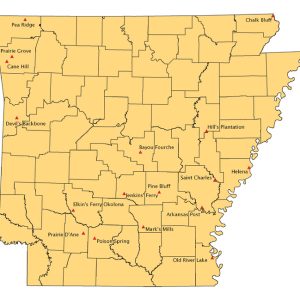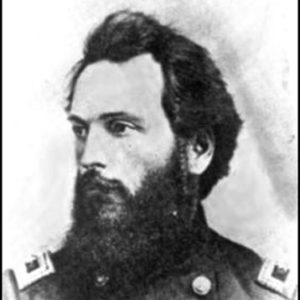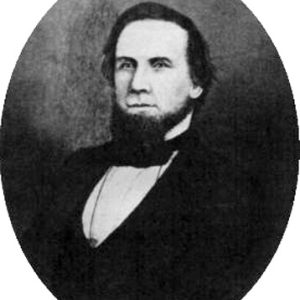calsfoundation@cals.org
Action at Hill's Plantation
aka: Action at Cache River
aka: Action at Cotton Plant
aka: Action at Round Hill
| Location: | Woodruff County |
| Campaign: | Operations near Cache River, Arkansas (1862) |
| Date(s): | July 7, 1862 |
| Principal Commanders: | Colonel Charles Hovey [US]; Brigadier General Albert Rust [CS] |
| Forces Engaged: | 1st and 2nd Brigade, 1st Division, Army of the Southwest [US]; unknown [CS] |
| Estimated Casualties: | 63 (US); 250 (CS) |
| Result: | Union victory |
The major Confederate attempt to halt General Samuel Curtis’s march across northeast Arkansas and destroy his army took place near the Cache River in July 1862. The Confederates were decisively defeated, allowing Curtis to proceed on to Clarendon (Monroe County) and ultimately to Helena (Phillips County), where he resupplied his army. The Federals turned Helena into an important river base and held the town for the rest of the war. Troops from Helena captured Little Rock (Pulaski County) the following year.
In the summer of 1862, Union Major General Samuel R. Curtis led the Army of the Southwest through northeast Arkansas in an attempt to capture Little Rock. Facing shortages and a supply line stretching to Rolla, Missouri, Curtis decided he first needed to establish contact with navy supply ships through the Mississippi and White rivers. In late June, he left Batesville (Independence County) and began to move along the White River toward Clarendon.
On July 7, 1862, Curtis started moving his troops across the Cache River on the last leg of the march to Clarendon. Federal brigade commander Colonel Charles E. Hovey led a reconnaissance to the east side of the Cache with a group of nearly 400 men, including parts of four companies of the Eleventh Wisconsin Infantry, portions of four companies of the Thirty-third Illinois Infantry, and one cannon from the First Indiana Cavalry. Colonel Charles Harris of the Eleventh Wisconsin was placed in direct command of the column. Harris led his men to the Parley Hill Plantation at the intersection of the Clarendon and Des Arc roads, about three miles northwest of the town of Cotton Plant (Woodruff County). After proceeding a short distance toward Clarendon, Hovey ordered Harris to return to the intersection and turn southwest down the Des Arc Road to rescue an unidentified Union soldier who had just been captured.
Unbeknownst to Hovey and Harris, Confederate Brigadier General Albert Rust had also started crossing the Cache with a 5,000-man force of Texas cavalrymen and Arkansas infantrymen and artillerymen. Rust detached about 1,000 men (the Twelfth and Sixteenth Texas Cavalry regiments) under Colonel William Parsons to secure the Cache and keep the Federals from crossing. When he learned that the Federals were already across the river, Parsons moved northeast along the Des Arc Road toward the plantation to strike the enemy.
Colonel Hovey and one of the Wisconsin companies remained at the plantation road intersection as a reserve while Harris led the rest of the troops southwest on the Des Arc Road. They passed the Hill house and a cornfield west of the house and soon entered a wood, where Harris deployed the Wisconsin men as skirmishers. The First Indiana cannon and one company of Illinois troops were close behind, while the rest of Harris’s men were some distance in the rear.
The underbrush made visibility difficult, so the Federals and Parsons’s men saw each other at almost the same time and opened fire. The Confederates soon began to push Harris’s force back. Hovey heard the firing and hurried to the battlefield. He rallied his troops and temporarily halted the Confederate assault, but after a lull, the Texans advanced and began driving the Federals back once more. Just as the First Indiana’s gun was about to be captured, Sergeant Edward Pike of the Thirty-third Illinois and a comrade pulled the cannon to safety, an act of bravery that subsequently earned Pike the Medal of Honor.
Hovey ordered the three unengaged Illinois companies and those Wisconsin troops in the area to move into the Hill cornfield, face the road, and take cover. Hovey then allowed the rest of the Wisconsin men, the First Indiana’s gun, and the supporting Illinois company to retreat toward the intersection.
The victorious Texans emerged from the woods and saw only fleeing Federals. Flushed with success, they charged in column up the road, but the Federals in the cornfield fired a deadly volley into the flank of the rebels. They continued to pour a heavy fire into Parsons’s command, and the survivors scattered. The Confederates fell back, but Hovey did not pursue, preferring to stay in his strong position and await the next enemy move. Parsons made a half-hearted attempt to outflank Hovey’s position, but after some skirmishing, his men withdrew again.
General Rust finally came forward with the rest of his force to reinforce Parsons, but apparently the general merely ordered one of his Texas cavalry regiments to move to the northeast to get between Hovey’s men and the rest of Curtis’s army. The effort failed when the reserve Wisconsin company and Union fugitives who had gathered at the intersection convinced the Confederates that a sizeable Federal force was present, leading them to give up the attempt.
Soon, Federal reinforcements arrived, consisting of a battalion of the First Indiana Cavalry and two more artillery pieces (about 200 men), and Hovey decided to counterattack. He deployed his infantry, cavalry, and artillery and moved again down the road toward Rust. The Confederates retreated before the Federal advance, but they did stop long enough to face a reckless charge by the First Indiana Cavalry. After about twenty minutes of hand-to-hand fighting, Rust’s men continued their retreat. The Federals kept up the pressure, and the Confederates finally broke and fled in disorder toward Des Arc (Prairie County). General William P. Benton arrived with even more Federal reinforcements from the main Cache River crossing, and they pursued Rust’s men back to the lower river crossing, but the Confederates had made it across ahead of Benton, destroyed their boats, and escaped.
Curtis moved on to Clarendon but missed his rendezvous with the supply ships, which had been delayed by the Engagement at St. Charles, where the USS Mound City was badly damaged. Realizing that the area’s swamps and lowlands were unsuitable as a campsite for his large army, Curtis marched on to establish a supply base at Helena on the Mississippi. Despite his victory at Hill’s Plantation and the fact that he was able to reach Helena and fresh supplies, he failed to capture Little Rock. But it was not the actions of Parsons and Rust at Hill’s Plantation that prevented the Federals from taking Little Rock that summer. Curtis had been delayed by logistical problems, not by the Confederates. The city would remain the capital of Confederate Arkansas for another fourteen months.
For additional information:
Field, Charles D. Three Years in the Saddle from 1861 to 1865. N.p.: 1898.
Hovey, Charles E. “Gen. Curtis’s Army.” National Tribune. November 28, 1889, pp. 1–2; December 5, 1889, pp. 1–2; December 12, 1889, pp. 1–2.
Quiner, E. B. The Military History of Wisconsin. Chicago: Clarke & Co., 1886.
Shea, William L. “The Confederate Defeat at Cache River.” Arkansas Historical Quarterly 52 (Summer 1993): 129–155.
Shea, William L., and Earl J. Hess. Pea Ridge: Civil War Campaign in the West. Chapel Hill: University of North Carolina Press, 1992.
Way, Virgil G. History of the Thirty-Third Regiment Illinois Veteran Volunteer Infantry in the Civil War. Gibson City, IL: Published by the Regimental Association, 1902.
Jeffrey L. Patrick
Wilson’s Creek National Battlefield
 Civil War Events Map
Civil War Events Map  Charles Hovey
Charles Hovey  Albert Rust
Albert Rust 




Comments
No comments on this entry yet.